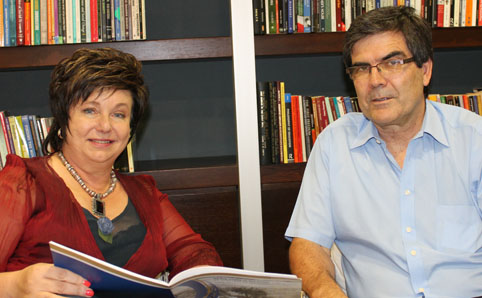 |
|
Die Fakulteit Opvoedkunde se nuut-aangepaste B.Ed.-programme word binnekort by die Nasionale Departement van Hoër Onderwys en Opleiding ingedien vir herakkreditasie. Proff. Rita Niemann (links), Direkteur vir Nagraadse Studie en Navorsing, en Gawie du Toit, Direkteur vir Aanvanklike Onderwysersopvoeding, is aan die stuur van die herkurrikuleringsproses vir voorgraadse en nagraadse programme van die Fakulteit Opvoedkunde.
6 March 2012
|
The training of professional teachers rests on a strong curriculum. For this reason, the Faculty of Education has been re-looking at the curricula of the B.Ed. programme for the past two years.
Before this programme is submitted for approval and accreditation, the Education Faculty’s staff from the Bloemfontein and Qwaqwa Campuses will attend a summit at the Gariep Dam on 7 and 8 March 2012. This summit is a sequel to guidelines drawn up by the National Department of Higher Education and Training on adjusted requirements for teacher training. It determines that all initial teacher training and honours programmes be recurriculated and resubmitted for accreditation. These requirements were published in the Government Gazette in July 2011 and involve all education faculties in the country.
Deans and line heads of other faculties, including Natural and Agricultural Sciences, Humanities, and Economic and Management Sciences, have also become involved as Education students often register for modules in these faculties.
Last week a team from the UFS’s Education Faculty also attended a workshop presented by the Council on Higher Education where the criteria for recurriculation and the evaluation of programmes were discussed.
Prof. Gawie du Toit of the UFS’s Faculty of Education says curriculation is not merely a technical process but requires thorough reflection and conceptualisation, involving various roleplayers.
“It is important that recurriculation should take place over a period of time to allow for sufficient time for reflection, absorption and ownership.”
Thus, the aim of the Gariep Dam summit is to introduce a teachers’ training program that will provide graduates with the necessary knowledge, skills and responsibilities to take up their places as academics and professional beginner teachers.
During these two days students in Education will not attend any classes but they are tasked with self study and to complete assignments.